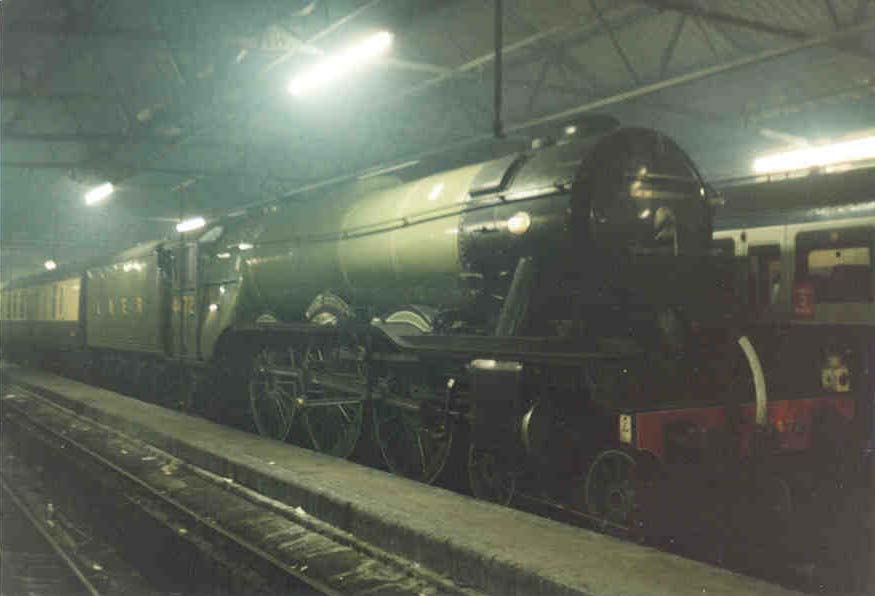Railroad History by The Wannabe Railfan
1. "The Flying Dutchman"

The Flying Dutchman--LNER 4472 A3 class 4-6-2
Picture caption: "Marleyborne, Feb. 86, London".
Technical Data: A3 Class 4-6-2
| Built: |
1922-35 |
| Withdrawn: |
1959-66 |
| Purpose: |
Express passenger and frieght service |
Boiler Information
| Grate Area: |
41.25 square feet |
| Cylinder Size: |
19 inches in diameter x 26 inch stroke |
| Boiler Pressure: |
220 pounds per square inch. |
Physical Information
| Total Length: |
70 feet, 5.125 inches |
| Total Operating Weight: |
154.15 to 158.65 tons |
| Engine Weight: |
96.25 tons |
| Tender Weight: |
57.9 to 62.4 tons |
| Tender Coal Capacity: |
8 to 9 tons |
| Tender Water Capacity: |
5000 gallons |
| Driving Wheel Size: |
6 feet, 8 inches in diameter |
| Tractive Effort: |
32,909 pounds of force |
The Flying Dutchman was one of many famous Gresley Pacifics that was built for
the London & North Eastern Railway (LNER) in Britain. The Class A3 was built
between 1922 to 1935 with some Class A1 rebuilt to A3s from 1927 to 1948. The
Flying Dutchman and its sister locomotives were derived from a fairly sound
Pacific (4-6-2) design
created by renown locomotive designer, Sir Nigel Gresley. The design (Class A3)
was a modification of an earlier design (Class A1), which called for high boiler
pressure (180 psi) and short travel valves to handle heavy passenger train at a
relatively high rate of speed. This class of locomotive successfully capture the
world record for steam traction. On November 1935, The Flying Dutchman, tyed a
record of 100 miles per hour (161 KMh) set by a smaller 4-4-0 English locomotive
in 1903. Another Class A3, The Papyrus, 5 month later, broke the speed record,
with a speed of 108 MPH. Two month after that, The Milwaukee Road's Hiawatha No.2
Atlantic (4-4-2) broke that record with a speed of 112 MPH.
The Class A3 locomotives

